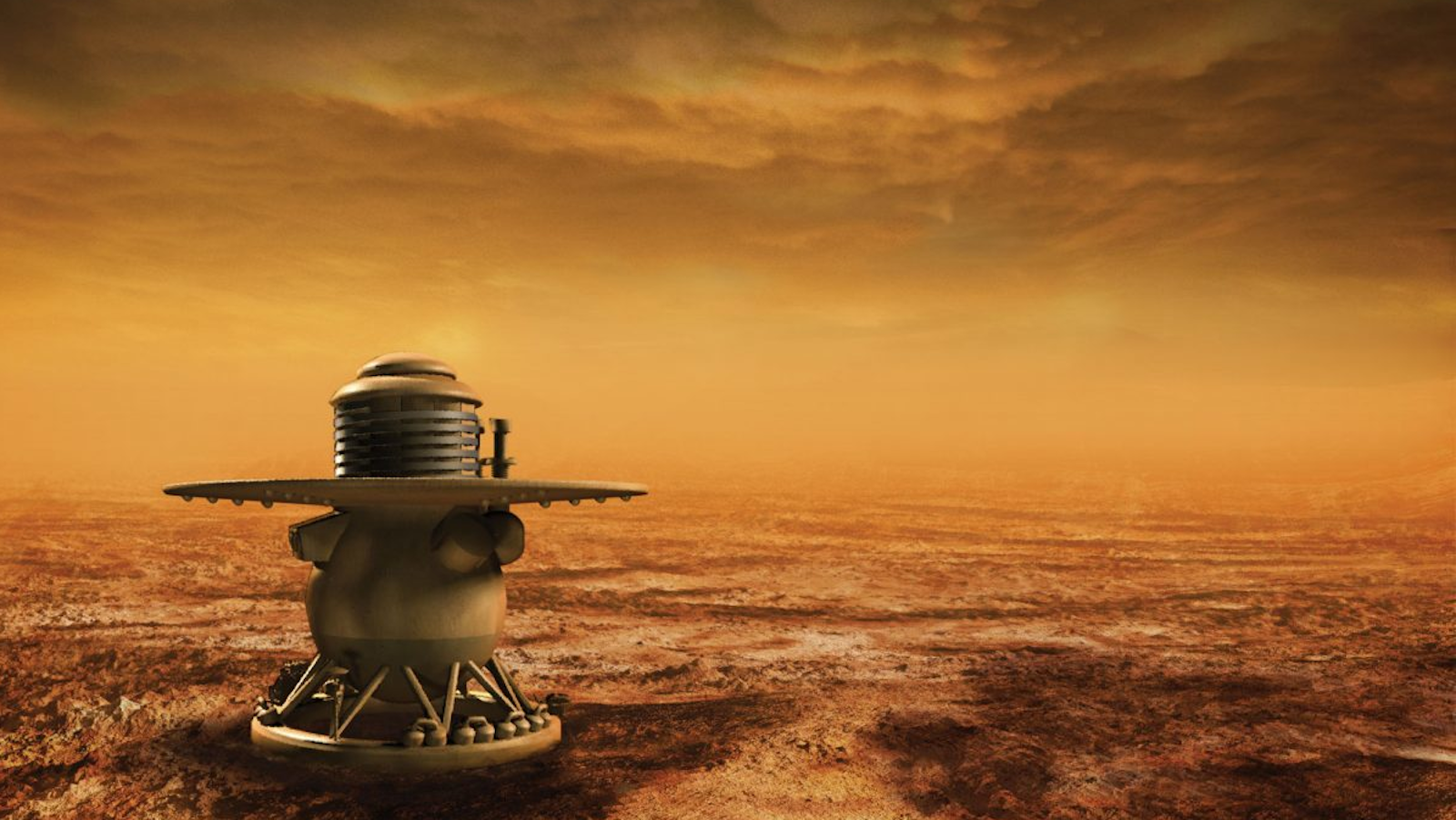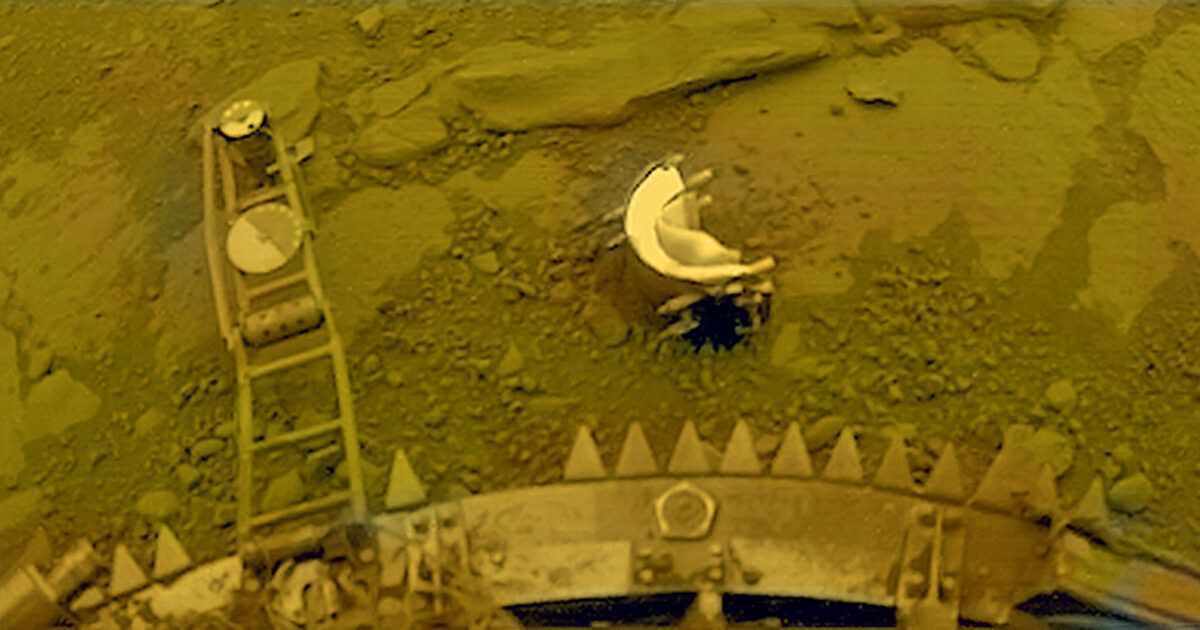23 minutes on Venus: the hellish voyage of Venera 7.
Spending less than half an hour on the surface of Venus would give Dante Alighieri a run for his money.

Fifty-three years ago today, on August 17, 1970, a small spacecraft launched from central Asia left the Earth's orbit, headed toward our nearest planetary neighbor, Venus. The Venera 7 mission, designed by scientists from the Soviet Union, was as its mission designation suggests the USSR's seventh attempt to send a space probe to the planet Venus. This daring attempt to reach another world was yet another milestone in the space race, the competition between the USA and the USSR to be (usually) the first to take this or that important step into space, both for purposes of science and also, perhaps more importantly, for political reasons. While Americans tended to focus on the Moon and Mars, for some reason the Soviets were obsessed with Venus. Likely they thought it was easier to reach with 1960s technology, and comparatively less was known about Venus than either the Moon or the red planet. Consequently, claiming Venus--in spirit if not literally--for Karl Marx and the October Revolution remained a significant goal for the Russians well into the 1970s.
Venera 7 had a lot to live up to. The Soviets didn't have much luck with their Venus exploration program. Then again, no one did. Though closer to Earth and easier to get to than Mars, Venus proved a far more difficult place to land a ship. They adopted a step-by-step approach. Veneras 1 and 2, in 1961 and 1965 respectively, were designed simply to fly by the yellow planet, take some readings and then tumble off into space. Neither made it. Both probes' telemetry failed not long after launch. By now scientists were beginning to learn some unpleasant things about this planet: Venus had a choking atmosphere of toxic gasses which was extraordinarily hot and extremely thick. This last point proved the tricky one. Venera 3 finally made it to Venus in March 1966, only to be crushed by extreme pressure before it could transmit a single byte of data about the planet. In October 1967, Venera 4 lasted barely long enough to get a message back to Earth before it imploded. Venera 5 lasted a whole 53 minutes before crumpling like a soda can; Venera 6, 51 minutes. It was clear that if the Russians wanted to land anything on the surface of Venus that had a hope of sending a signal before it either melted or was crushed into scrap metal, they were going to need a heavy-duty spaceship.
Venera 7 seemed to fit the bill. Far from the graceful "rocket ship" of science fiction or the gangly tinfoil contraptions that Americans sent to the Moon and later Mars, Venera 7 was basically a one-ton ball of reinforced titanium with a couple of parachutes, an antenna and some sensing instruments. Even this design didn't have much of a chance, and it was a foregone conclusion the spacecraft would implode after a short time. The only question was how much data it could send back before doing so. On this attempt, however, the ship was armed with a super-cooling device that would chill the lander as much as possible before entry, and the landing pod was only detached at the very last second. On December 15, 1970, the Soviet mission controllers watched the data hopefully as Venera 7 started its descent toward the Venusian surface. They were in for yet another disappointment. One of the parachutes ripped, thus failing to slow the ship to the speed necessary for a soft landing. Thirty-five minutes into the landing phase the probe stopped transmitting, evidently crushed yet again by the horrendous air pressure of the Venusian atmosphere.
A few weeks later, however, as controllers reviewed tapes of data from the failed mission, they noticed something surprising: Venera 7 transmitted an extremely weak signal, less than 1% of normal intensity, after the moment when the scientists calculated it should have crashed on the surface. The signal beam lasted for 23 minutes before winking out forever. The Soviets surmised that the probe did in fact land, but bounced and fell over so its antenna was pointed away from Earth. Yet they were now sure that Venera survived on the surface of Venus for 23 minutes. This was humanity's first successful--if just barely--soft landing on another planet.

What Venera recorded during those 23 minutes, however, was terrifying. The only instrument that was still working was its thermometer. The temperature at the landing site was an astonishing 887° Fahrenheit. That's hotter than the melting point of lead. Added to what else had been discovered about the planet, it was clear that Venus was a ferocious blasted hell far beyond anything Dante could have imagined. This fact, and the taunting failures of the previous probes, may have merely whetted the Russians' appetite for more: between 1972 and 1983 they sent nine more probes to Venus, some of which managed to land successfully and even transmit a few pictures before being crushed, melted and corroded into sizzling puddles of molten metal.
Venus is arguably the most interesting planet in our solar system, if only because it's so forbidding. Doubtless we will return to study more of its mysteries, but the place is so awful and punishing that we won't want to stay for long. As the story of Venera 7 demonstrates, even 23 minutes can be an eternity in a place like that.
The Value Proposition
Why should you be reading this blog, or receiving it as a newsletter? This is why.
☕ If you appreciate what I do, buy me a virtual coffee from time-to-time to support my work. I know it seems small, but it truly helps.
📖 You could also buy my newest book.
🎓 Like learning? Find out what courses I’m currently offering at my website.
📽 More the visual type? Here is my YouTube channel with tons of free history videos.



Comments ()